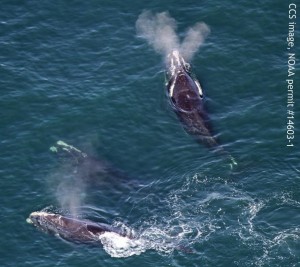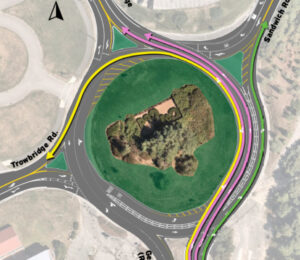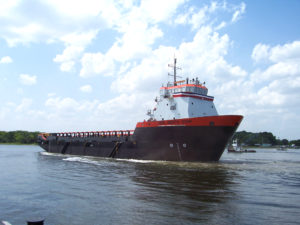
Three rare North Atlantic right whales photographed in Cape Cod Bay by Center for Coastal Studies aerial survey team on February 21, 2016.
CCS image taken under NOAA permit #14603-1.
HYANNIS – Scientists will gather in New Bedford Wednesday and Thursday for the North Atlantic Right Whale Consortium.
The right whale species is the most endangered large whale in the world with an estimated population around 450.
That population estimate is expected to decrease after 17 of the marine mammals were found dead in the U.S. and Canada in 2017 with no new calves reported during the last birthing season.
“We are usually discussing the status, how many have died, what is the mortality projection for the future,” said Charles “Stormy” Mayo, with the Center for Coastal Studies. “And the most pressing thing these days is how many calves are we going to see and why is all of this happening.”
Mayo said the discussions are detailed and the scientists who attend are extremely knowledgeable.
Most of the right whales congregate in Cape Cod Bay from mid-winter until early spring to feed. When they leave the bay, most spend time in waters from Canada down to the Mid-Atlantic. The birthing areas are off the coast of Georgia and Florida.
The Center for Coastal Studies will begin aerial surveys earlier and further away than usual next week to study the whales before they come to Cape Cod Bay.
“We think they are coming in from offshore waters where they are pretty much right now,” Mayo said. “In the next several months we would anticipate, if this year is like previous years, that they’ll be cycling in from deeper areas east and north of the Cape.”
The earlier aerial surveys have been made possible from an increase if donations from foundations, groups and individuals on Cape Cod, including Nauset Disposal.
“We’ll be trying to fly further out to see if we can locate those animals offshore in areas that are probably not as well managed and protected,” Mayo said. “We are looking for areas where the whales are vulnerable.”
Mayo said the future of the species continues to look grim.
There have been three confirmed right whales deaths in 2018, which is significantly down from 2017, but still too high, according to Mayo.
“Scientists estimate that the population really cannot suffer more than a little less than one animal dying a year from human causes,” he said.
Mayo believes the other side of the equation, the birthing side, is even more important.
“In order to keep going these whales need to be producing young animals,” Mayo said. “If we don’t see in the tens of young ones born off of Florida and Georgia we need to really ring that bell that’s already ringing even louder that this population is in very deep trouble.”
Reports of new calves cane begin coming in as early as December. The peak birthing season is normally in January.
There are currently only about 100 females of breeding age in the population and more females seem to be dying than males.
By BRIAN MERCHANT, CapeCod.com NewsCenter
























